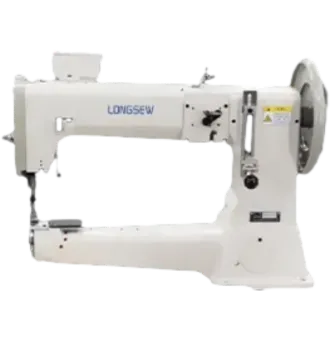foot on a sewing machine
The Foot on a Sewing Machine An Essential Guide to Sewing Techniques
The art of sewing has been around for centuries, serving as a vital skill for many cultures around the world. Among the various components of a sewing machine, one of the most significant is the foot—specifically, the presser foot. Understanding the importance of the presser foot, its types, and how to use it effectively can greatly enhance your sewing experience and improve the quality of your work.
Understanding the Presser Foot
The presser foot is a small attachment located on the sewing machine that holds the fabric in place while it is being stitched. This seemingly simple component plays a crucial role in ensuring that the fabric feeds evenly through the machine. Without it, the fabric could shift, leading to uneven seams and poor stitching quality.
Different sewing tasks often require varying presser foot designs. The standard presser foot is ideal for most basic sewing projects, but other specialized feet can help achieve specific techniques and finishes, making them indispensable for more advanced sewing.
Types of Presser Feet
1. Zipper Foot As its name suggests, this foot is designed for sewing zippers. It allows you to sew very close to the zipper teeth, which is essential for achieving clean and professional-looking finishes on skirts, dresses, and bags.
2. Buttonhole Foot When it comes to creating buttonholes, this foot is a must-have. It allows the machine to sew evenly spaced stitches, giving you a perfect buttonhole every time.
3. Walking Foot This foot is great for quilting or working with multiple layers of fabric. It features a set of feed dogs that work in tandem with the machine's feed dogs, ensuring that all layers move smoothly and evenly.
4. Satin Stitch Foot Ideal for decorative stitching, this foot allows for more intricate designs. It keeps the fabric steady while you create beautiful embellishments that can enhance any project.
foot on a sewing machine

5. Overlocking Foot For those who want to finish edges and prevent fraying, the overlocking foot can assist in creating a professional, clean finish similar to what you’d find in ready-made garments.
Techniques for Effective Use
Using the presser foot effectively goes beyond simply attaching it to the machine. Here are some tips for getting the most out of this vital tool
- Choose the Right Foot Always assess your project and select the most appropriate presser foot for the specific task at hand. Each foot is designed for particular techniques, so using the right one can significantly affect the outcome.
- Adjust Pressure Many sewing machines allow you to adjust the presser foot pressure. If you’re working with lightweight fabrics, reduce the pressure. Conversely, increase it for thicker fabrics to ensure that they feed smoothly.
- Practice with Scraps Before diving into your main project, practice sewing with the chosen presser foot on scrap fabric. This will help you become familiar with how it works and allow you to identify any adjustments you might need to make.
- Keep It Clean Regularly clean your presser foot and the surrounding area of the machine. Lint and dust can accumulate, which may affect its ability to function properly.
Conclusion
Mastering the presser foot on a sewing machine is essential for anyone looking to enhance their sewing skills, whether you’re a beginner or an advanced sewist. Understanding the different types of presser feet available and their specific functions can open up a world of possibilities in your sewing projects. By employing the right techniques and practices, you can ensure that your sewing projects not only look professional but also hold together beautifully. So, the next time you sit down to sew, take a moment to appreciate the vital role that the presser foot plays in your work. Happy sewing!
-
Boost Production Efficiency with a Pattern Sewing MachineNewsAug.29,2025
-
Industrial Excellence with the Best Heavy Duty Sewing MachineNewsAug.29,2025
-
Precision and Power with the Best Pattern Sewing MachineNewsAug.29,2025
-
Reliable Bulk Packaging Starts With the Right FIBC Sewing MachineNewsAug.29,2025
-
Advanced Packaging Solutions: Elevate Productivity with Jumbo Bag Sewing Machine and Industrial Stitching EquipmentNewsAug.29,2025
-
High-Performance Solutions for Bulk Packaging: FIBC Sewing Machine and MoreNewsAug.29,2025
-
Maximize Efficiency with an Industrial Cylinder Arm Sewing MachineNewsAug.28,2025


























